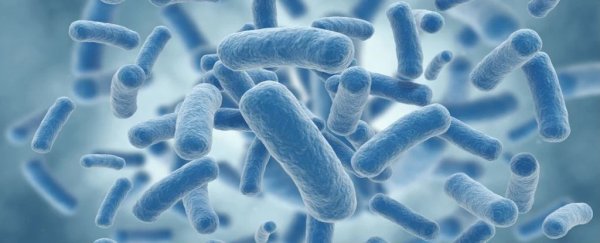Since the dawn of genetics in the early 20th century, biologists have debated whether evolution is driven more by chance mutations or by the original diversity in the gene pool.
Having a lot of genetic options to choose from might make natural selection move a lot faster at the start, but do the genetic mutations that happen over time contribute more to species survival in the end?
To attempt to resolve this long-standing argument once and for all, researchers at Michigan State University have tested the adaptive ability of 72 different populations of Escherichia coli bacteria over 2,000 generations (around 300 days).
Each population of bacteria was engineered to have different amounts of genetic diversity at the start of the experiment.
On one end of the spectrum, the population was bred from a single clone, so every cell was genetically identical to every other cell.
In the middle of the spectrum, populations were grown from one pre-existing population of bacteria.
On the far end of the spectrum, E. coli populations were created by mixing a few pre-existing populations together, creating the maximum amount of genetic diversity possible.
Each population was fed glucose at the start of the experiment. To test adaptability, various sets of these bacteria populations were taken and propagated in a different growth environment, providing them with the amino acid D-serine instead of glucose for their energy needs.
At the 0, 500, and 2,000 generation point, the populations were tested for their ability to compete for nutrition resources against a common competitor (which was another strain of E. coli with an intermediate fitness level).
The E. coli samples were all derived from the Long-term Experimental Evolution Project, which was started in 1988 by one of the co-authors on the recent paper, evolutionary biologist Richard Lenski.
When each population of bacteria was measured for its fitness in the D-serine environment before any evolution occurred, the more genetically diverse populations fared the better than the clones.
At the early stages of the experiment (around 50 generations in), the wealth of genetic diversity in the initial population was important for adaptation.
But, by the 500th generation, the diversity at the start of the experiment "no longer mattered" because the new mutations were "sufficiently large", the authors write in their preprint, which is available on BioRxiv ahead of peer review.
By the 500th and 2,000th generation, there were "no differences in fitness" among all the different populations of bacteria, despite the variation in fitness at the start.
"Any benefit of pre-existing variation in asexual populations may often be short-lived, as we saw in our experiment, because that variation will be purged when new beneficial mutations sweep to fixation," the researchers write.
While it's yet to be vetted by others in the scientific community and published in a peer-reviewed journal, this result may close the book on the longest-running argument in evolutionary biology when it comes to bacteria.
But there is no 'right' answer in terms of the relative importance of standing variation and new mutations for adaptation in nature, the researchers write.
Scientists working on different models tend to "emphasize one or the other source of genetic variation", they add.
Scientists studying animals and plants tend to emphasize the diversity of the gene pool as the major source of evolutionary capacity because it isn't practical to wait around for hundreds of years for mutations to mix things up.
Those studying bacteria and viruses tend to look to mutations as the major source of evolution.
But really, both forces – mutation and existing genetic diversity – "can contribute sequentially, simultaneously, and even synergistically to the process of adaptation by natural selection", the researchers say.
This preprint is available on BioRxiv ahead of peer review.
